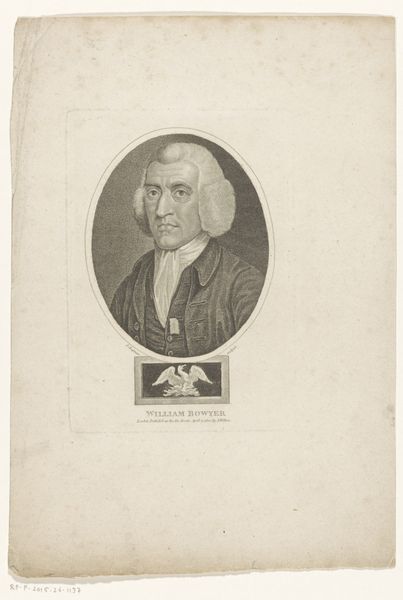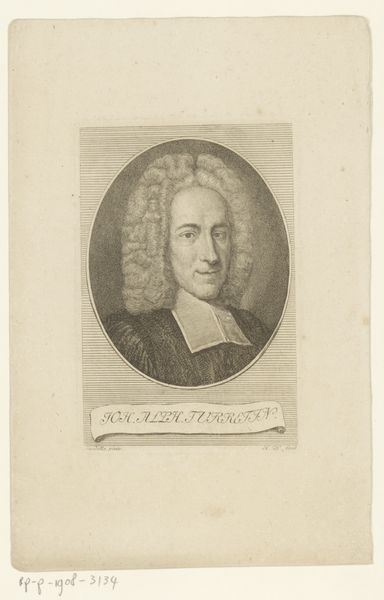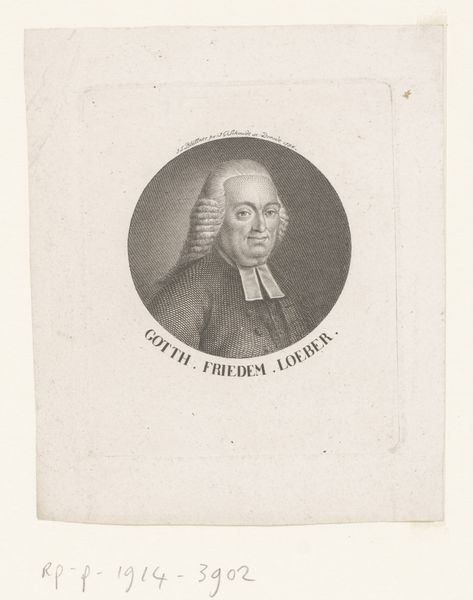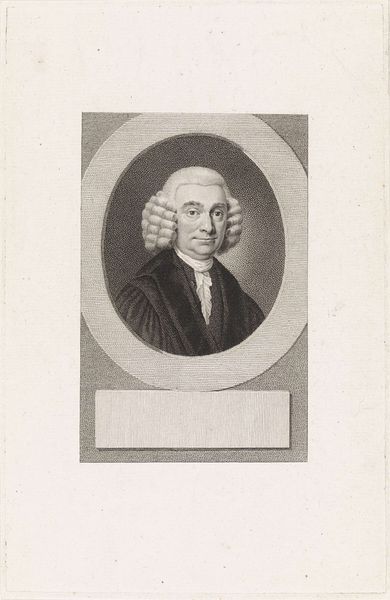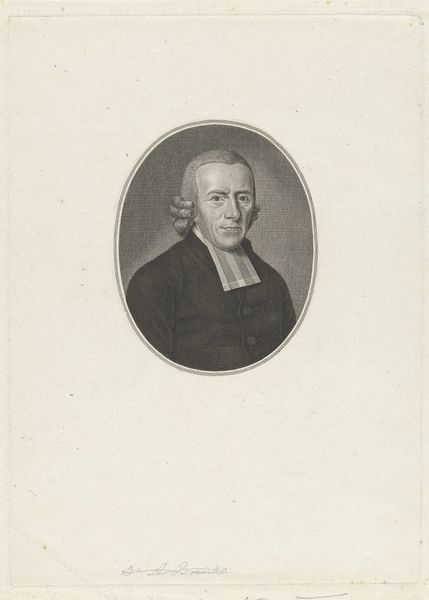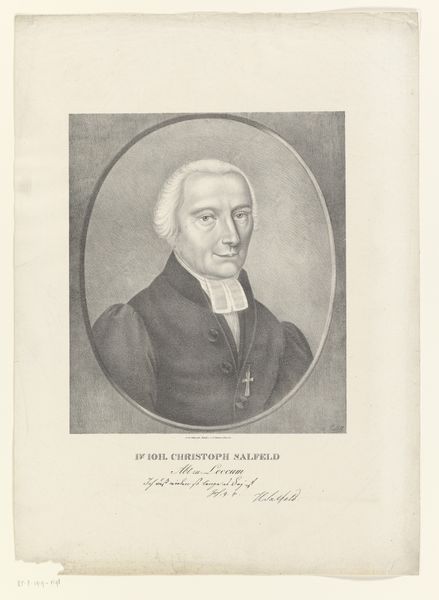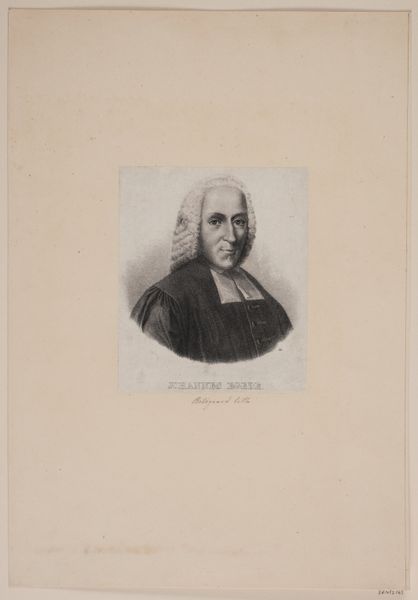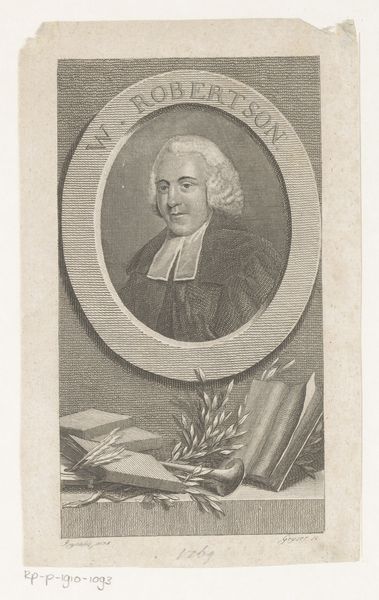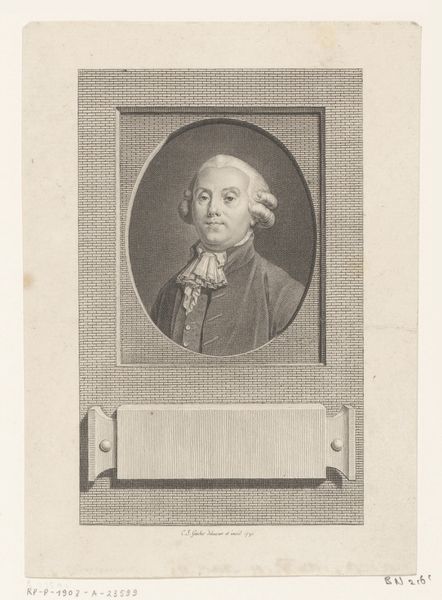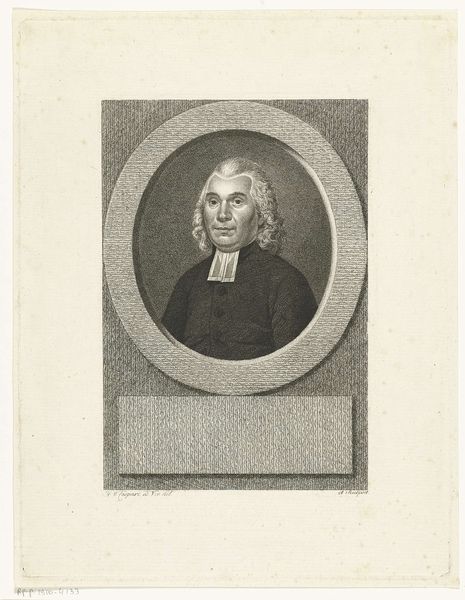
print, engraving
#
portrait
#
neoclacissism
#
aged paper
# print
#
old engraving style
#
personal sketchbook
#
history-painting
#
engraving
Dimensions: height 176 mm, width 112 mm
Copyright: Rijks Museum: Open Domain
Editor: Here we have a portrait of Lord Edward Thurlow, dating back to 1790. It’s an engraving by Eberhard Siegfried Henne. There’s something so formal and imposing about the composition... How do you read this portrait, considering its formal qualities? Curator: Formally, observe the stark contrast between the meticulously rendered textures – the dense wig, the intricate lace – and the relatively blank background. Note also how the oval border subtly contains, almost restrains, the figure. The engraver is drawing attention to detail to the extent of abstraction. This tension is heightened by the tonal range—limited, yet capable of suggesting volume and presence. Editor: So, you’re suggesting the focus is primarily on the technical mastery of the engraving itself, rather than necessarily conveying much about Thurlow’s character? Curator: Precisely. The semiotic weight rests on the rendering, not necessarily the referent. The image invites reflection on the relationship between technique and subject. Consider, too, the line work; how does it contribute to the overall effect? Is it purely representational or does it possess a certain expressive quality? Editor: I see what you mean. The line work is incredibly precise, almost scientific, yet there's a certain artistic flair, especially in the shading around the face. Curator: Precisely. We may not discern the artist's opinion of Lord Thurlow, but rather marvel at their ability to evoke him. It has prompted me to think that Neoclassical ideals favoured restraint; here, it feels like there’s also an attempt to restrain or filter a real man. Editor: I appreciate how you've helped me to notice that it's less about the person depicted and more about the artist's skill in portraying him through the medium. Thank you!
Comments
No comments
Be the first to comment and join the conversation on the ultimate creative platform.
